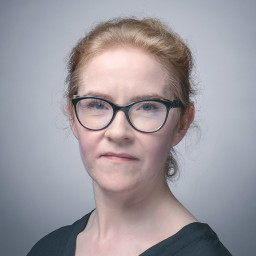A cut to National Insurance (NI) in the autumn statement looks like great news for struggling budgets. But the harsh reality is we’re still set for a post-war tax burden high, and this barely makes a dent.
Thresholds for income tax as well as NI have been frozen and are set to remain the same until 2028 – with the additional rate threshold for income tax reduced earlier this year. As wages rise, more people are being dragged into paying more tax. This is known as fiscal drag.
Total tax receipts and NI contributions for April 2023 to October 2023 are £457.3bn, a whopping £23.9bn higher than the same time last year.
As long as rates stay frozen, this trend is likely to continue. Nearly four million more people are expected to be paying income tax by 2028-29 and nearly four million more will have moved to a higher rate.
This article isn't personal advice. ISA, pension and tax rules can change, and any benefits depend on your circumstances. Tax rates and bands are different for Scottish taxpayers. If you're not sure what's right for you, ask for financial advice.
Short-term tax relief, but what could be next?
The decision to cut NI will still bring some short-term relief. The chancellor says it will help 27 million people and save an employee on the average wage of £35,000 more than £450 a year.
More importantly it signals government intention to cut further in the future as we move towards a general election. Potential cuts were floated in the run up to the autumn statement and could still feature in a spring budget.
Income tax cuts could be the next shining star with potential for the basic rate to be cut from 20% to 19%. This would definitely put more money in people’s pockets, but it would also have a knock-on impact on pension tax relief.
For example, Basic-rate taxpayers would have to put £81 into their pension to get the top up to £100, instead of the current £80. It might only look like a small amount, but long term it could make a big difference.
Inheritance tax could be another candidate. This was the subject of the earliest rumours, with plans allegedly in place to cut the tax threshold from 40% to 30%. The plans were criticised for favouring the better off at a time when so many are struggling through the cost-of-living crisis.
The government might return to the idea of a rate reduction later. But we think raising nil-rate bands and revisiting gifting allowances could better help lift many of these people out of the net. It would help more people pass money on and support their loved ones at key milestones during their lifetime.
What can I do now?
There are still things you can do to help cut how much tax you’ll pay right now.
Adding money into Individual Savings Accounts (ISAs) and pensions is extremely tax efficient and a great way to help you towards your long-term goals.
You can pay up to £20,000 each tax year into ISAs, and you won’t have to pay any UK income or capital gains tax on that money once it’s inside the ISA.
Read more about what was announced on in the 2023 autumn statement, including on tax and pensions.
Pensions, like a Self-Invested Personal Pension, have a generous tax relief structure. For example, for those under 75, for every £80 you contribute to a pension, the government tops it up to £100 with basic-rate tax relief. The cost to those who pay higher or additional-rate tax could be as little as £60 or £55 if they claim any additional tax relief to which they’re entitled. Tax relief on personal contributions is limited by your earnings (or £3,600 if this is greater). Any contributions also count towards the annual allowance, which is £60,000 each tax year for most people.
If you have a salary-sacrifice arrangement as part of your workplace pension, you can also reduce your income tax and NI bill by giving up part of your salary for an employer pension contribution. Pensions are designed to help you save towards your retirement so you can’t normally access the money in a pension until age 55 (rising to 57 in 2028).
There are other allowances available to help you manage your tax bill.
For example, basic-rate taxpayers have a savings allowance that means you don’t pay tax on the first £1,000 of interest on your savings. This drops to £500 if you're a higher-rate taxpayer.
Capital gains and dividend tax allowances are being reduced but can still play a part in your tax planning strategy.
Tax planning can be complicated and if you need support, get financial advice.





